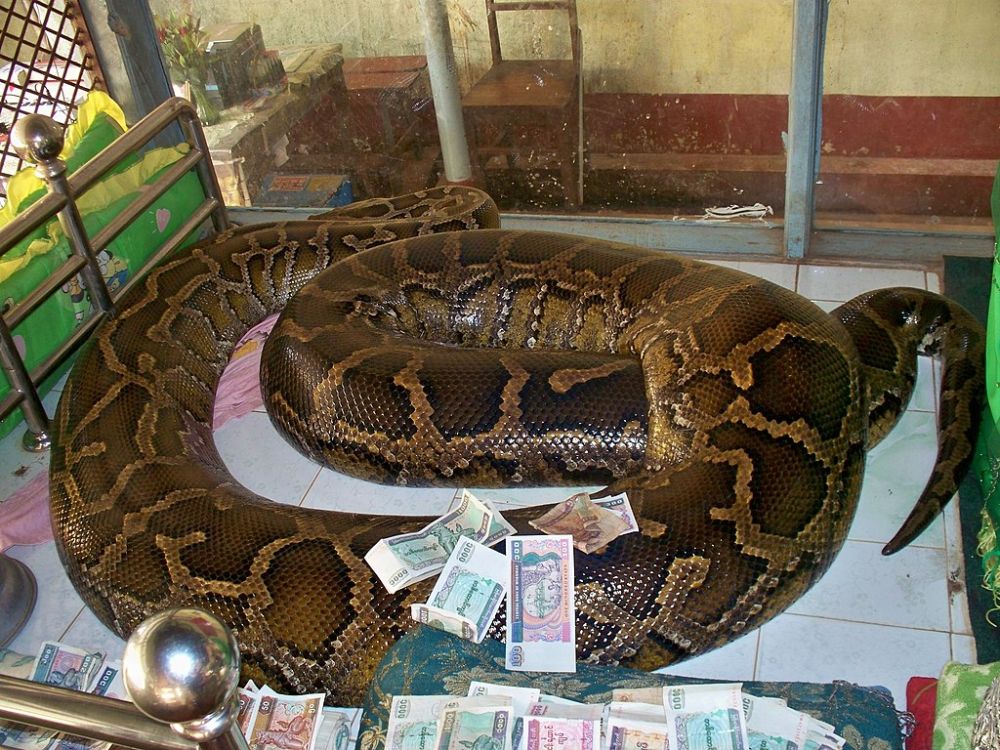

Bago, formerly known as Pegu, is an ancient city with a rich history that plays a central role in the development of Buddhism in Myanmar. One of its unique attractions is the Snake Monastery, also known as Hmwe Paya, which has become an intriguing site for both local and international tourists. The history of tourism at the Snake Monastery intertwines with local legend, religious reverence, and the curiosity of those seeking to experience Myanmar's exotic and spiritual side.
The Snake Monastery is a Buddhist temple well-known predominantly for its resident attraction – a large Burmese python, which is believed to be a reincarnation of a revered monk. This monastery dates back to the early 20th century, and it has been a site of worship as well as a place that piques the curiosity of visitors.
Legend has it that the monastery's python is over 120 years old, although several pythons have likely lived in the monastery through the years, given the species' natural lifespan. The python is said to enjoy the monks' and visitors' reverence, as it is adorned with gold leaf and given offerings. The belief in the python's spiritual significance keeps the Snake Monastery as a prominent religious site and a tourist attraction.
The tourism industry in Bago and the Hmwe Paya has seen significant growth in the past few decades. Following the gradual opening up of Myanmar to international tourism, the Snake Monastery has featured in a variety of travel itineraries. It offers a glimpse into the mystical aspects of the local culture that are both fascinating and somewhat unconventional to foreign visitors.
Investments in infrastructure, including better roads and improved facilities, have made it easier for tourists to visit Bago and the Snake Monastery. Local tour guides often include the Hmwe Paya in their Bago city tours, explaining its historical and religious importance to the visitors.
In recent years, sustainable and responsible tourism has become a major trend in Myanmar. There is a noticeable shift toward creating experiences that are respectful of local traditions and that contribute to the preservation of cultural sites. Moreover, travelers are increasingly seeking authentic interactions with local communities, and visits to places like the Snake Monastery often include conversations with the monks and an exploration of Buddhist practices.
Due to the COVID-19 pandemic, the Snake Monastery, like many other tourist destinations worldwide, saw a decline in visitation. However, as travel restrictions ease, there is an anticipation of a recovery in tourism, with a focus on health safety and sustainability.
The Snake Monastery in Bago continues to be a point of interest for tourists seeking to engage with the spiritual and mystical facets of Myanmar. While it may not be as widely known as the Shwedagon Pagoda or Bagan's ancient temples, it contributes significantly to the diverse tapestry that make Myanmar a rich and intriguing destination. As tourism evolves, it is likely that the Snake Monastery will remain an essential stop for those exploring the spiritual heritage and unique customs of this Southeast Asian nation.